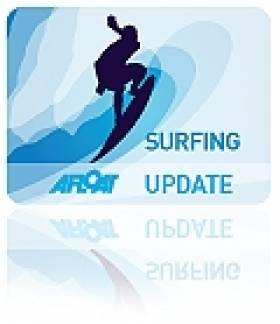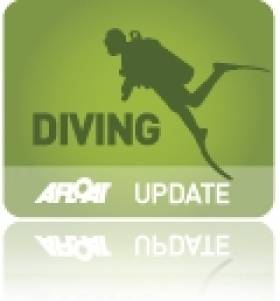Displaying items by tag: missing
Missing Man's Body Found In Cavan Lough
#Missing - TheJournal.ie reports that the body of a man who went missing last weekend has been found in a Cavan river.
Donal Greene, 22, was last seen around 5am last Saturday morning (28 February) near Ballyconnell, Co Cavan, close to the Fermanagh border, and his disappearance prompted a wide-ranging search operation.
But yesterday afternoon (Saturday 7 March) it was confirmed that his body was round at Derrycassan Lough on the course of the Woodford River.
TheJournal.ie has more on the story HERE.
Body Recovered From River Erne After Lengthy Search For Missing Monaghan Man
#LoughErne - Police have recovered a body in Lough Erne believed to be that of a Monaghan man missing since December.
As previously reported on Afloat.ie, Kieran McAree was thought to have entered the lough after abandoning his car in Enniskillen, Co Fermanagh on 17 December.
By early January search teams were focused on recovering the body, but the local community continued to rally by joining the search in their hundreds to cover a wide area of the lough.
Now the Belfast Telegraph reports that a body believed to be that of the 23-year-old was found yesterday lunchtime (18 February) at the Round O jetty on the River Erne.
Bodies Found In Search For Missing Trawler In English Channel
#Missing - BBC News reports that two bodies have been recovered from the sea in the search for four fishermen whose trawler went missing in the English channel this week.
Lifeboat crews from Dungeness, Dover and Hastings RNLI stations yesterday (29 January) resumed their part in a major search for the Belgian fishing boat, which vanished from radio contact on Wednesday (28 January) some 10 miles south of Dungeness.
They joined search and rescue helicopters, vessels from the French authorities, a Trinity House boat and several other fishing trawlers in what was expected to be "a long, protracted search of the channel", according to RNLI divisional operations manager Allen Head.
At 3pm yesterday debris was identified 20 miles southeast of Dungeness, in French territorial waters, and the lifeboats continued to search the area until they were recalled by the coastguard.
However later in the evening two bodies were discovered in the sea off Boulogne in northern France, some 30 miles across the channel from Dungeness. BBC News has more on the story HERE.
#Missing - On New Year's Day emergency teams entered the third day of a search and rescue operation on the north Down coast for a woman missing from her Bangor home since Monday 29 December.
According to the Belfast Telegraph, a member of the public reported that the woman – in her early 30s, and believed to have experienced a recent bereavement – had swum out into open water, leaving a bag of clothes at a pier in the town on the southern shore of Belfast Lough.
A major search operation was launched with the coastguard and RNLI lifeboats joined by Lagan Search and Rescue, a fishery patrol and a PSNI helicopter, but this was scaled back on Wednesday to two search boats and a team of coastguard volunteers searching on land.
Elsewhere in Northern Ireland, the search for a missing Monaghan man in Enniskillen entered its 17th day yesterday (2 January), with the Belfast Telegraph highlighting the "extraordinary" level of community support behind the volunteer effort.
Kieran McAree is thought to have entered Lough Erne after abandoning his car in the Fermanagh town in the early hours of 17 December, and now the search is focused on recovering his body.
But even as recently as last weekend more than 300 people joined in the search in their own boats and kayaks to cover a wide area of the lough, with PSNI Constable Gavin Huey telling the Impartial Reporter: "This is the biggest search I have ever witnessed on Lough Erne."
Body Recovered Off Howth Pier
#Howth - BreakingNews.ie reports that a body has been found near Howth Pier earlier today (Tuesday 11 November).
Though the identity has not yet been confirmed, gardaí said they have since stood down their search in tandem with Howth Coast Guard for missing 38-year-old Catherine O'Reilly.
The Clontarf woman was last seen on Thursday (6 November), and her car was found at the pier yesterday afternoon.
Search For Missing Yachtsman In Brighton Suspended
#Missing - Search and rescue teams have been combing the coastline around Brighton for a missing yachtsman after his yacht was found drifting in the southern English town's marina late last night.
According to Yachting & Boating World, fears for the missing man's safety grew after an RNLI crew member who boarded the 70ft Sunseeker found no sign of life, despite the instruments being on and the engine still being warm.
The search has spread out from Brighton Marina and environs to some miles offshore into the English Channel in what were described as "challenging conditions" overnight for lifeboat volunteers, with the search suspended before lunchtime today.
As the Eastbourne Herald reports, the missing yachtsman is believed to be Leonard George King from Alfriston in East Sussex, who failed to return home from a planned trip yesterday.
Body Recovered From River Boyne Thought To Be Missing Young Man
#Missing - Gardaí have said they are satisfied that a body recovered from the River Boyne yesterday afternoon (Saturday 23 August) is that of missing Meath man John Ryan, as The Irish Times reports.
The remains of the 20-year-old – who had been missing from Mornington in Co Meath since last Tuesday – were removed from the Boyne by Drogheda River Rescue during a search, and are expected to be positively identified today.
#Surfing - The family of an Irish surfer in Australia who went missing after he and two friends were pulled out to sea by a rip current have expressed their hope that he will be returned to them.
As previously reported on Afloat.ie, the incident prompted a major search and rescue effort in treacherous conditions off Tallow Beach on Byron Bay, south of the Gold Coast in New South Wales last Saturday morning (19 July).
The missing man has since been named by Independent.ie as 20-year-old Stuart Butler from Santry, who had joined two friends, Levi Fahrenholtz (25) from the US and Mike Fuller (19) from England to go boarding at the popular surfing spot.
Fuller managed to reach nearby rocks when the rip current pulled them away from the beach, and Fahrenholz was later rescued after he was swept around Cape Byron, but all trace of Butler's whereabouts was lost.
The North Dubliner is officially listed as a missing person, though it's been confirmed that the search effort is "now a body recovery operation".
Independent.ie has more on the story HERE.
Irish Surfer Missing Off Eastern Australian Coast
#Surfing - The Irish Times reports that the search for an Irish surfer missing since Saturday morning (19 July) off Cape Byron in Australia was suspended earlier today in fading light and treacherous conditions.
The 19-year-old was surfing with two friends when they got caught in a rip current near Tallow Beach, south of the Gold Coast in New South Wales.
One of the two rescued, aged 26, was helped from the water unharmed, while the other, aged 20, was found on nearby rocks with minor injuries.
Local surf clubs have joined in the search and rescue operation attended by helicopters and jet ski crews. The Irish Times has more on the story HERE.
Body Of Missing Diver Found Off Baltimore
#Diving - Search teams have found the body of a diver who went missing off West Cork early yesterday (2 July) after an incident that lead to the death of another diver.
As previously reported on Afloat.ie, a major search and rescue operation was launched after the accident at a wreck site off the Baltimore area.
According to Independent.ie, the two deceased men were in their 60s and understood to be experienced diving enthusiasts, who had been exploring the wreck of a German U-Boat that sank off Castlehaven in 1945.
Both men, from England, were described as regular visitors to the Baltimore area since the late 1970s.
Independent.ie has more on the story HERE.






































































